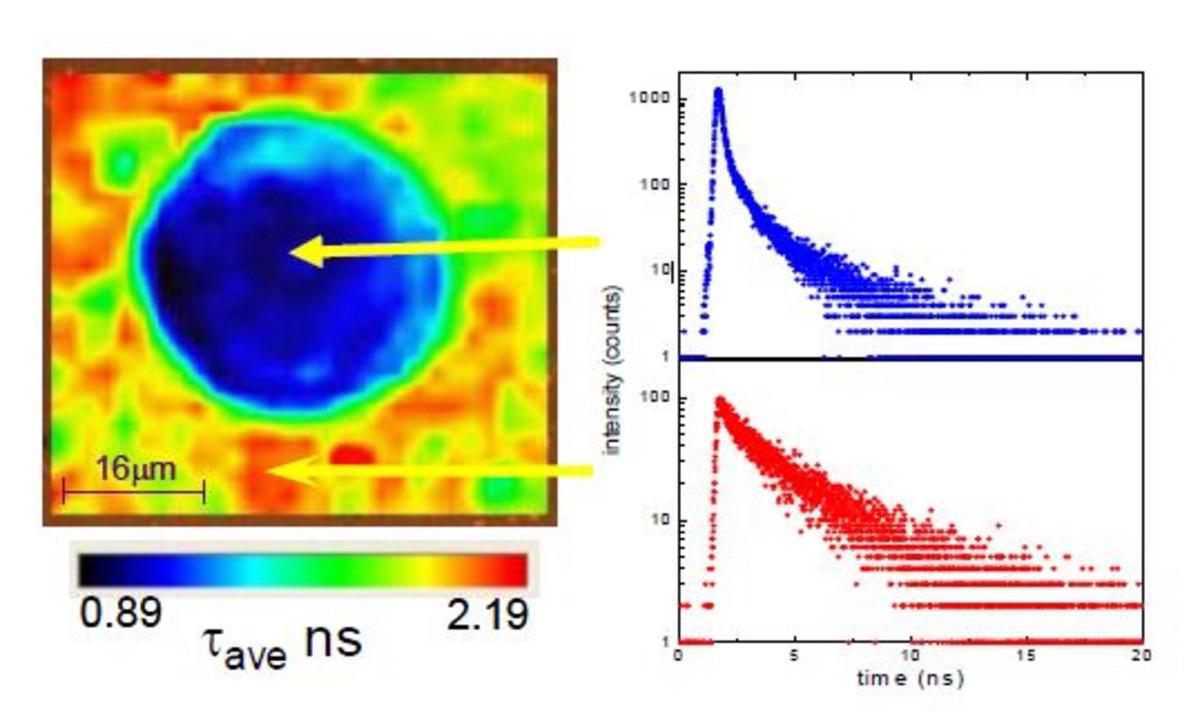
The use of metal surfaces in conjunction with fluorescence molecules employing a plasmon effect, sometimes referred to as metal enhanced fluorescence, can be advantageous because of the possible enhancement of photophysical properties. For example, the emission intensity of the fluorophore, can be improved. It is possible to produce metal structures in‐situ from silver nitrate via light irradiation, within a host material such as sol‐gel derived silica or a polysaccharide film. This approach allows control over position that maybe useful for potential lab on a chip applications and is demonstrated by monitoring the fluorescence from a FITC labelled protein.
TCSPC/MCS Fluorescence Lifetime System
